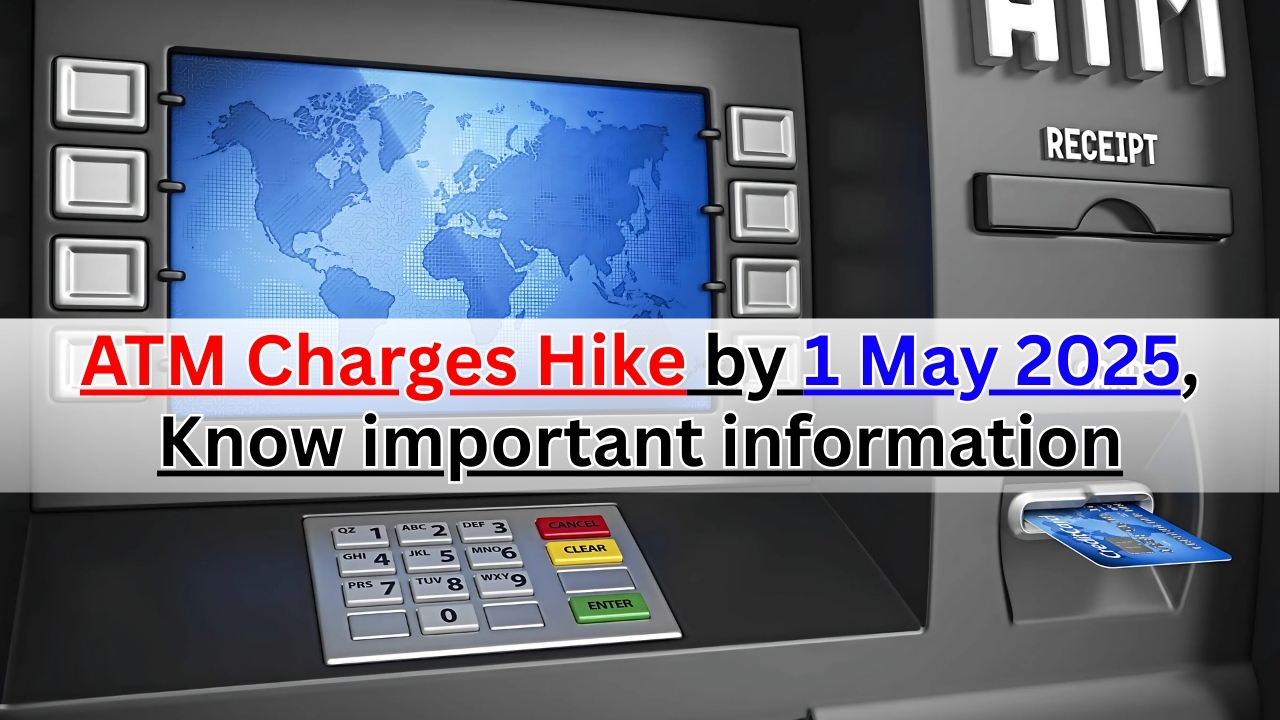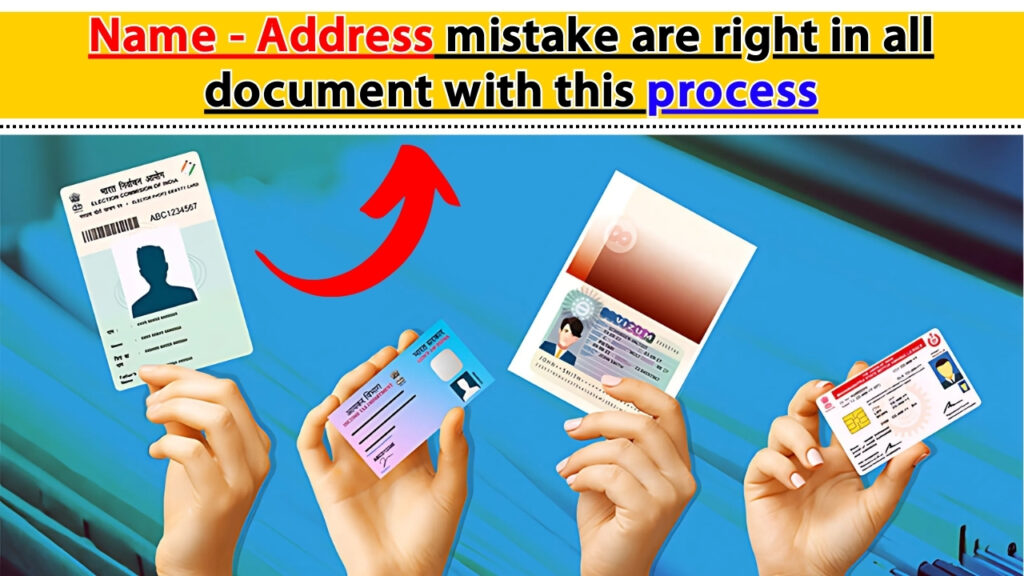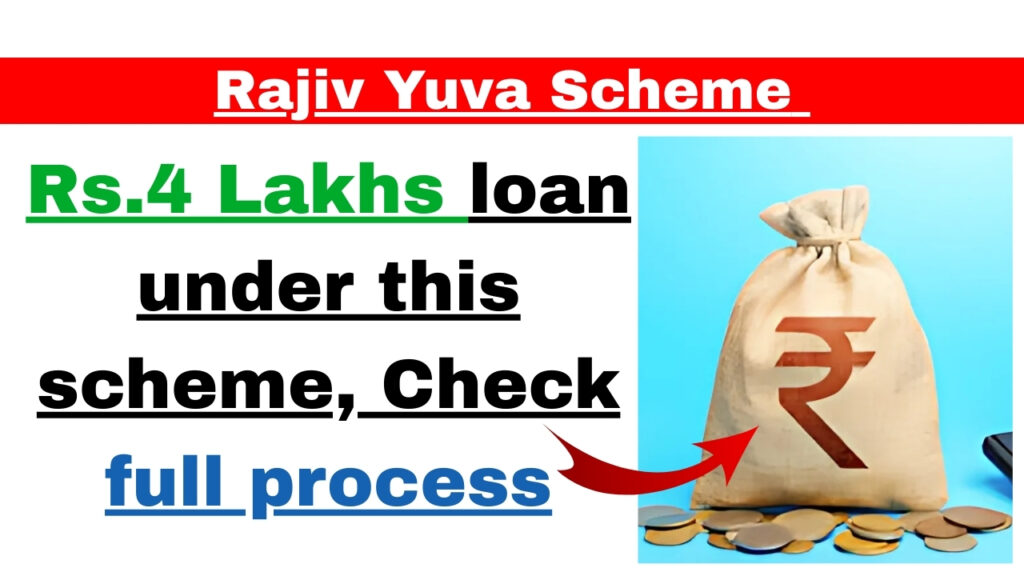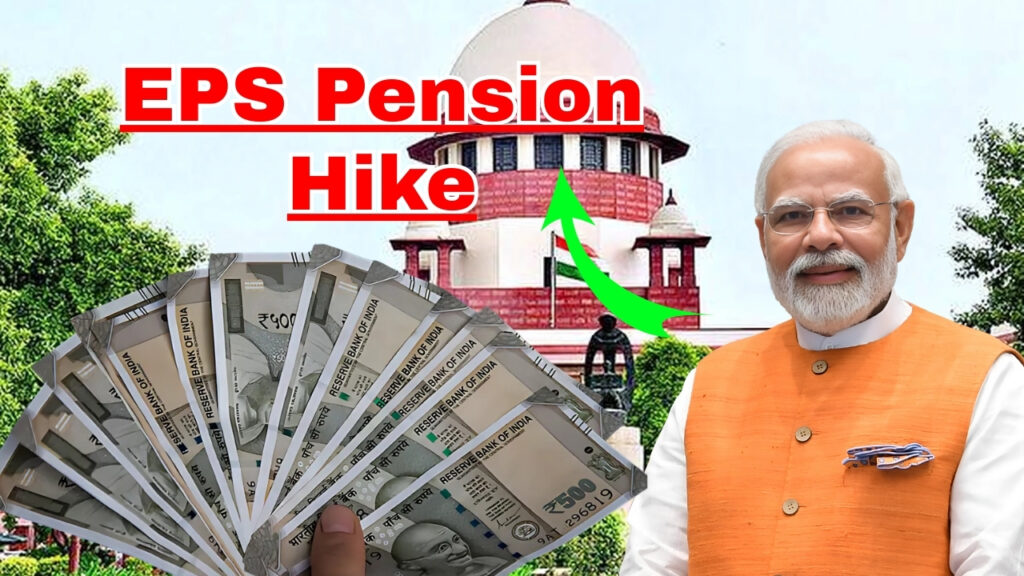ATM Charges Hike : In a major news that’ll impact millions of banking customers all over India, the Reserve Bank of India (RBI) has agreed to a suggestion to change Automatic Teller Machine (ATM) transaction charges with effect from the May 1, 2025. This decision follows a prolonged consultation with banking groups and is the first significant change to ATM fee setting in almost four years.(ATM Charges Hike)
The forthcoming changes are set to affect the way customers strategise towards cash withdrawals and use ATM services – it will depend on the bank, your account type and how often you transact. Industry watchers see these changes as reflecting rising maintenance of ATM networks and nudging greater use of digital payment options.
Table of Contents
ATM Charges Hike The New Fee Structure: What Will Be Different

The new fee schedule has introduced a number of key changes compared to the previous structure:
-
Free Transaction Limit Slashed: Other bank ATM withdrawals in metro cities to be reduced from 5 to 3 free transactions per month. In non-metro areas, the cap falls from five to four transactions a month.
-
Higher Charges for Extra Transactions: Customers will have to shell out Rs. 25 for every financial transaction, and for non-financial transactions, they will have to pay Rs. 12 after the free transaction limit is crossed.
-
Home Bank ATM Transaction Limits: Before, banks that provide unlimited free ATM transactions at their own ATM now have a cap on free transactions – anywhere between 8 and 10 transactions per month, then you pay charges.
-
Differentiated Pricing Tier for Premium Accounts: The new system also enables the banks to set a higher threshold for free transactions for premium accounts than for regular accounts.
The logic, as explained by Rajesh Khanna, head of retail banking at a top private sector bank, is this: ‘ATM infrastructure costs a lot of money ranging from cash management, security, maintenance to technology upgrade. These updated tariffs better reflect the true cost of service delivery while ensuring Government continues to cover the cost of basic needs.”
ATM Charges Hike Effect on Various Customer Segments
The new pricing tiers will impact different customer segments in differing waysآ:
-
Urban Consumers: The reduction to only three free other-bank transactions will hit those urban dwellers who have access to various banking facilities. But they also generally have more access to digital alternatives.
-
Rural and Semi-Urban Customers: These customers have a bit of a reprieve with even the somewhat higher limit of 4 free transactions, and worse are generally not so well placed to access the relatively few digital services still offered free of charge, but they too will now face higher charges for transactions above the free limit.
-
Senior Citizens, Differently-abled: Most banks said they would continue with extended free services to senior citizens, differently-abled people, and basic savings account holders as part of financial inclusion measures. Generally, they should still get 2-3 further transactions than the average Joe.
-
Premium Account Holders: If you are still maintaining a big enough balance (in most cases more than Rs 1 lakh) you will continue to receive more freer transaction limits and some banks still offer unlimited free access to ATMs across networks to their top-tier customer.
Teacher from Pune, Meena Kumari was worried about the changes: “I withdraw smaller sums more frequently for the sake of security so it is possible for me to exceed the free transaction limit. This is definitely going to pinch my monthly budget and I will have to be more cautious with my cash withdrawals.
ATM Charges Hike Bank-Specific Implementations
Though the RBI has given a general framework, each bank has some latitude in imposing in, hence some differences in the exact policies:
-
Psb: Most of the govt banks have already resolved to implement the maximum limits mandated by the RBI; SBI has said it will cap free home-bank withdrawals at 10 per month and decrease the other-bank number of free transactions as per the norm.
-
Private Sector Banks: At some private banks, such as HDFC Bank, ICICI Bank and Axis Bank, the limits imposed on normal depositors have been retained with somewhat relaxed thresholds for premium customers. HDFC Bank, for one, will maintain the number of free home-bank transactions at 12 for customers who maintain an average quarterly balance of Rs. 2 lakh or more.
-
Small Finance Banks and Payment Banks: These banks usually have limited ATM network and are the first to come up with competitive measures. For instance, Jana Small Finance Bank has indicated that it will keep 5 free transactions (both for home and non-home banks) for all its customers, irrespective of the place of setting up of the account.
Foreign banks Most foreign banks in India, which target the high-value customer segment, have said they will absorb the higher costs or retain higher free transaction limits for their premium customers.
“The differences in how the policy is implemented reflect the different types of customers and competitive positions of the banks,” wrote Vikram Singh, a banking analyst for a top-tier financial research firm. “Those that have wealthier customer bases will offer richer policies, and those that serve mass-market segments will stick more closely to the new limited ones to control costs.”
The Wisdom of Introducing at the Right Time and Slowly
And the May 1, 2025 effective date is not an arbitrary one. The timing matches with several strategic considerations, according to people aware of the RBI’s decision-making :
-
New Financial Year: Commencing the new financial year gives a fresh start for accounting and executing the new Fee schedule.
-
Digital Infrastructure Maturity : There is enough digital penetration in UPI ecosystem and other digital payment platforms to provide alternate options to customers instead of using ATM.
-
Advance Notice Period: The advance notice allows consumers time to adapt their banking behavior and to consider alternatives.
Several banks have also signaled that they will phase in the changes, rather than introduce them all at once. For example, Punjab National Bank has said simply customers will get warning notifications not actual charges for breaching the forthcoming limits over a three-month period.
Strategies to Protect Customer to Mitigate These Effects
Banking experts suggest a few different strategies for mitigating the fallout from these new fees:
-
Maximize Your Withdrawals: Minimize the number of times you need to make a withdrawal.
-
Use Home Bank ATMs if You’re a Serial User: Get used to using your bank’s ATMs since transaction limits tend to be more accommodating.
-
Cash-Back at Retailers: You may want to get cash-back when buying at a Point of Sale (PoS) terminal, which does not generally run counter to ATM transaction limits.
-
UPI, Digital Payments: Shift more payments to UPI, mobile banking and online keeping, all of which are now mostly devoid of transaction charges.
Combine accountsIf you have more than one family bank account, consider combining all transactions within fewer accounts to remain within the number of free transactions.
Discover Account Upgrades: Consider if upgrading to a paid account would be cost effective if these higher free transaction limits would result in no longer paying excess transaction fees.
Deepak Mehta, financial adviser concentrating on personal banking says: “In fact, this is a perfect time to take a look at your entire banking association. Most customers have account types that are inconsistent with the way they actually use the system. And, thanks to better ATM benefits with a slightly higher-tier account, you can pay less in the long run.”
ATM Charges Hike The Bigger Picture: ATM Economics And The Digital Push
The new fees also track broader patterns in banking economics and the national move away from cash transactions to digital ones:
Accessibility of ATM Operating: At CUs, the cost to keep an ATM network is now quite high. Increased requirements for security, technology change and cash management have made per transaction cost increase significantly.
Reduced Share of Cash: As a portion of all payments, cash payments have fallen significantly, which has caused ATM networks to become less economically viable to be maintained at previous volumes.
Digital Payment Initiatives by the Government The revisions are in tune with the ongoing government focus on minimizing cash usage in the economy and to push digital mode of transactions.
ATM Network Rationalisation: A number of banks are looking to rationalise their ATM network, optimising for those machines in strategic locations, reducing total terminal numbers.
Dr Rajiv Kumar, a banking economist, explains the alterations: “This increase in the fee is not just about banks earning more money. It expresses the economic truth that in an ever more digital economy, the cost of running such extensive cash infrastructure continues to rise.
The fees are designed to strike a balance between providing appropriate access to cash and the economics of providing that access.”
As May 1, 2025 draws near, banking customers should examine payment-usage patterns; investigate the details of the particular plans announced by their own personal banks; and consider modifying their cash management behavior to avoid incurring extra costs and fees for services, yet access banking-system services conveniently.










